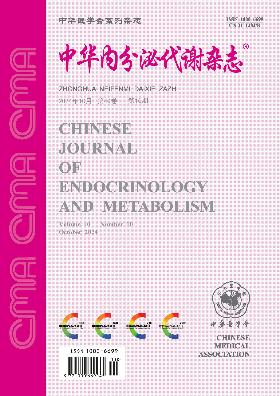Hutchinson-Gilford早衰综合征6例分析
Q4 Medicine
引用次数: 0
摘要
目的总结6例儿童Hutchinson-Gilford早衰综合征的临床特点,分析部分患者携带的致病基因。方法总结6例患者的临床资料。分析了4个家系的致病基因。用EDTA抗凝剂从受试者血液中提取3ml基因组DNA。采用第一代测序技术对Lamin A/C(Lamin A/C, LMNA)基因序列进行分析,并与正常测序结果进行比对,确定致病突变位点。结果所有患儿均有文献报道的典型临床表现,如严重的生长发育迟缓、特殊的皮肤表现和明显的颅面表现。基因测序结果显示,2例患者携带LMNA c. 1824C>T(p.G608G)经典杂合突变。另外2例患者携带LMNA ivs8 - 4c >A和C . 1968+ 2T>C非典型突变,其中ivs8 - 4c >A突变未见报道。结论在中国儿童中,LMNA基因的经典和非经典突变均可导致早衰的发生。根据临床表现很容易做出诊断。发现致病基因可进一步证实诊断。关键词:Hutchinson-Gilford早衰综合征;LMNA基因;儿童的早衰症本文章由计算机程序翻译,如有差异,请以英文原文为准。
Analysis on six cases of Hutchinson-Gilford progeria syndrome
Objective
To summarize the clinical characteristics of 6 children with Hutchinson-Gilford progeria syndrome, and to analyze the pathogenic genes carried by some patients.
Methods
The clinical data of 6 patients were summarized. The pathogenic genes of 4 families were analyzed. Genomic DNA was extracted from 3ml of the subject′s blood with EDTA anticoagulation. The first-generation sequencing technology was used to analyze the sequence of Lamin A/C(LMNA) gene and to identify the pathogenic mutation sites by comparing with normal sequencing results.
Results
All the children had typical clinical manifestations of the disease which has been previously reported in the literature, such as severe growth retardation, special skin manifestations, and distinctive craniofacial manifestations.Gene sequencing results revealed that 2 patients carried classical heterozygous mutation of LMNA c. 1824C>T(p.G608G). The other two patients carried atypical mutations of LMNA IVS8-4 C>A and c. 1968+ 2T>C, among which the mutation of IVS8-4 C>A has not been reported.
Conclusions
In Chinese children, both classical and non-classical mutations in LMNA gene lead to the occurrence of premature aging. It is easy to make a diagnosis based on clinical manifestations. Finding of the pathogenic gene may further confirm the diagnosis.
Key words:
Hutchinson-Gilford Progeria syndrome; LMNA gene; Progeria
求助全文
通过发布文献求助,成功后即可免费获取论文全文。
去求助
来源期刊

中华内分泌代谢杂志
Medicine-Endocrinology, Diabetes and Metabolism
CiteScore
0.60
自引率
0.00%
发文量
7243
期刊介绍:
The Chinese Journal of Endocrinology and Metabolism was founded in July 1985. It is a senior academic journal in the field of endocrinology and metabolism sponsored by the Chinese Medical Association. The journal aims to be the "Chinese broadcaster of new knowledge on endocrinology and metabolism worldwide". It reports leading scientific research results and clinical diagnosis and treatment experience in endocrinology and metabolism and related fields, as well as basic theoretical research that has a guiding role in endocrinology and metabolism clinics and is closely integrated with clinics. The journal is a core journal of Chinese science and technology (a statistical source journal of Chinese science and technology papers), and is included in Chinese and foreign statistical source journal databases such as the Chinese Science and Technology Papers and Citation Database, Chemical Abstracts, and Scopus.
 求助内容:
求助内容: 应助结果提醒方式:
应助结果提醒方式:


